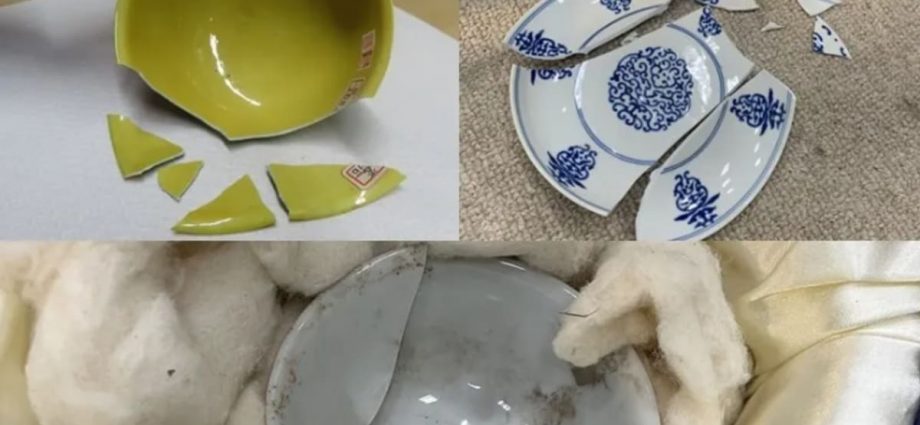
Wu said in a press conference that on Feb 3, 2021 and Apr 7, 2022, while staff members were organising artefacts, they discovered that a Ming dynasty “yellow teacup with two green dragons” (dated 1368-1644) and a Qing dynasty “yellow teacup with dragon pattern” (dated 1636–1911) were damaged.
Additionally, on May 19 this year, a Qing dynasty “blue-and-white floral plate” fell and broke due to staff mishandling, Taiwan News reported.
Wu said a senior staff member had placed the plate on a 1m-high workstation and it fell onto a carpeted floor and broke into several pieces “like a bowl would”.
The museum also said it was unable to determine who was responsible for the other two incidents despite going through 10 years of CCTV surveillance footage.
Wu suspected the broken artefacts could be due to unsatisfactory storage method.
He added that his staff immediately notified him of the incidents, and he had launched investigations in response.
The three artefacts had never been put on display. He also said they were not insured because they had not been appraised. He added that they were not appraised because insurance policies would have cost a lot otherwise.
The museum is working to improve storage practices for its artefacts, by replacing boxes with shelves, and to set aside a budget for 2023 to improve porcelain archive packaging.
The National Palace Museum on the outskirts of Taipei holds the world’s largest collection of Chinese artefacts, much of it brought over from the mainland by Chiang Kai-shek after the Nationalists fled to Taiwan during the Chinese civil war.
The collection spans 5,000 years of Chinese history, with only a fraction of it displayed at any one time.

